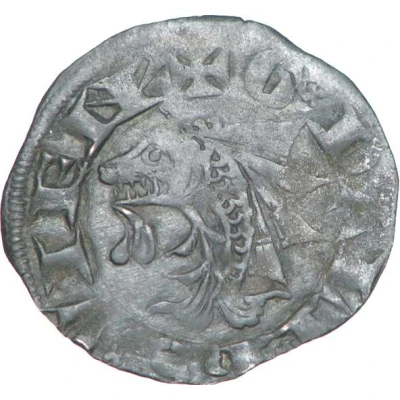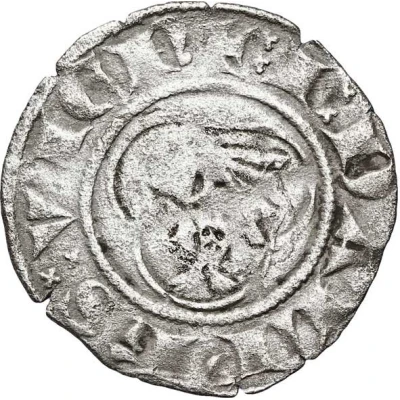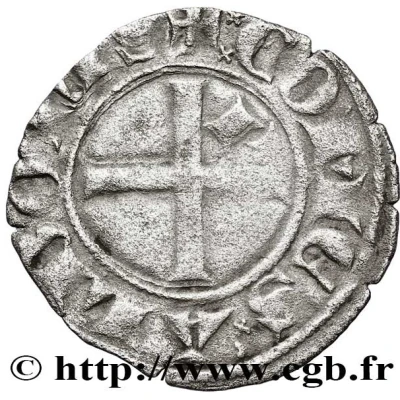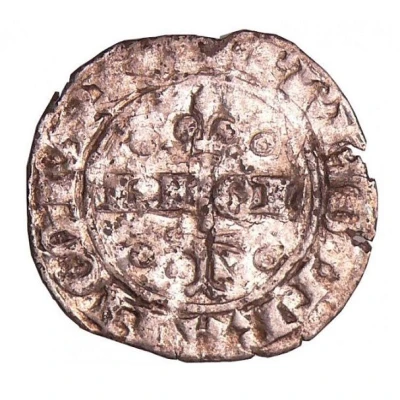
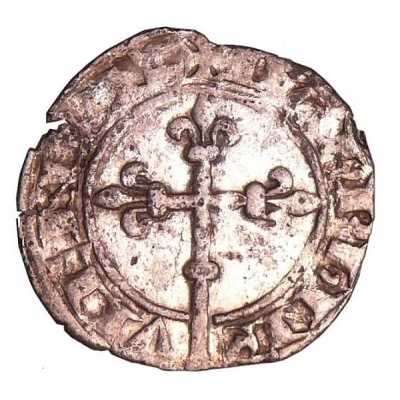

© PA-Engineer (CC0)
Double Denier - Charles I, Dauphin ND
| Silver | 1.0 g | 20 mm |
| Issuer | County of Vienne (Dauphiné) (French States) |
|---|---|
| Dauphin | Charles I (1349-1364) |
| Type | Standard circulation coin |
| Years | 1349-1364 |
| Value | 2 Deniers (1⁄120) |
| Currency | Livre |
| Composition | Silver |
| Weight | 1.0 g |
| Diameter | 20 mm |
| Shape | Round (irregular) |
| Technique | Hammered |
| Orientation | Variable alignment ↺ |
| Demonetized | Yes |
| Updated | 2024-10-04 |
| Numista | N#316548 |
|---|---|
| Rarity index | 97% |
Reverse
Fleurdelized Latin cross whose foot cuts the legend at the bottom.
Script: Latin (uncial)
Lettering: ✠ DALPhNS VIENESIS
Lettering (regular font): ✠ DALPHNS VIENESIS
Unabridged legend: Dalphinus Viennensis
Translation: Dauphin of Viennois.
Comment
Obverse lettering variations (PMOG, PRMOG, PRIMOG, etc.) are often mentioned in different catalogues; however, they are more due to the low grade of the coins (common for this type) than to truly existing variations.Interesting fact
One interesting fact about the Double Denier coin is that it was minted during a time of great economic and political change in France. The coin was issued by Charles I, who was the Dauphin (heir to the throne) of France and ruled over the County of Vienne (Dauphiné) in the 14th century. The coin's silver content and small weight of 1.0 g made it a valuable and practical currency for everyday transactions. Despite its small size, the coin played an important role in the local economy and was used by merchants, traders, and common people for buying and selling goods and services.
